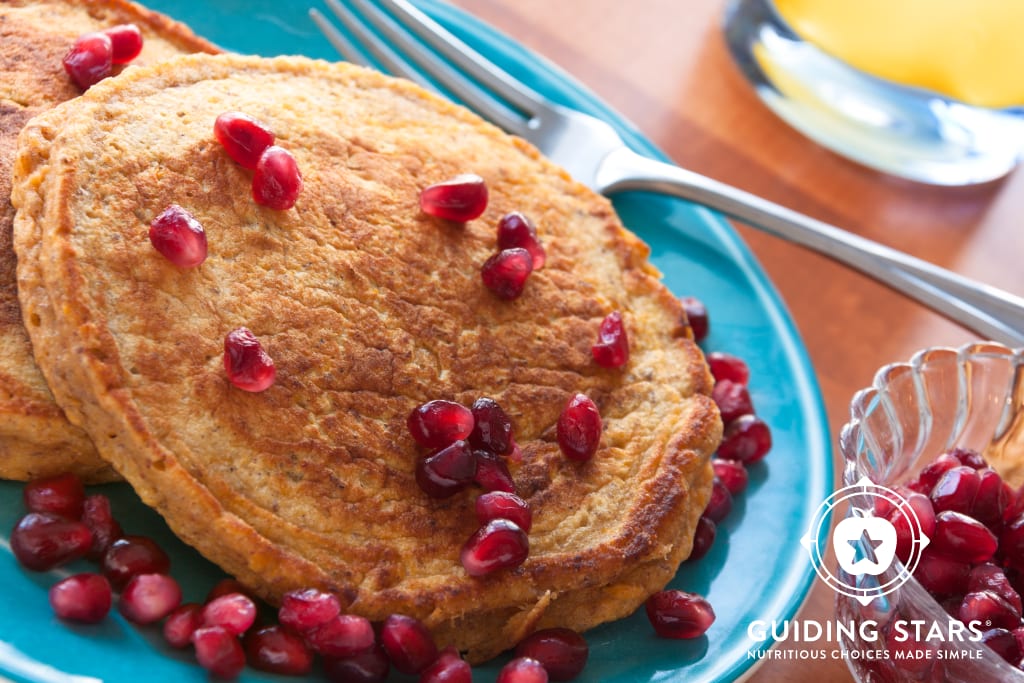
If you’ve ever shopped “by the stars,” you already know how handy it is. Lots of foods in the store are labeled with their Guiding Stars 1, 2, or 3-star rating. Choosing more 2 and 3-star rated foods allows you to skip the in-depth label reading. You can easily put more nutrition in your cart. But what about putting more nutrition on your plate? There are only so many foods that we eat simply as they are. (Shout-out to baby carrots, my go-to do-nothing veggie side!). This is especially true if we are making an effort to purchase whole or minimally-processed foods. In other words, we often have to cook our food and combine ingredients together in recipes. How do we make sure our meals earn Guiding Stars too? Lucky for us, the Guiding Stars has roughly 1,200 star-earning recipes on the website!
The algorithm works for recipes.
The patented Guiding Stars algorithms set the framework for determining the star ratings of individual foods. The general algorithm also guides the ratings of recipes. Here’s the process in a nutshell:
- The Guiding Stars recipe team enters each recipe ingredient into a nutrition analysis computer program. Sometimes a particular ingredient isn’t already listed in the software (as sometimes happens for branded or unusual food ingredients). At that point, the team has to do some research. They find reliable nutrition information for that ingredient and enter it into the database.
- The database software then creates a Nutrition Facts label for the recipe. This is done because the algorithm itself is based on information gleaned from the Nutrition Facts label.
- Finally, just as with single food products, the Nutrition Facts information for the recipe is put through the algorithm. The general Guiding Stars algorithm is used for most recipes. If the recipe is just for a meat, such as a roast, then the Meat, Poultry and Seafood algorithm is used. From there, the recipe is given a point score. This score determines how many Guiding Stars it will receive.
It’s not about calories.
It might seem like only low-calorie recipes would earn stars. Guiding Stars, however, is about nutrients and nutrient density—not calories. Serving sizes vary between types of recipes. A serving of salad doesn’t weigh the same as a serving of meat. They also vary within recipe categories, for example, not every soup or stew recipe will be based on a 2-cup portion size. Guiding Stars looks at a 100-calorie portion of the finished dish.
This is not to say that a 100-calorie portion is the appropriate serving size. Using that standard portion simply “levels the playing field.” It allows fair ratings and comparisons both between and within recipe categories. However, what you see when looking at Guiding Stars-rated recipes on the website are the Nutrition Facts labels that make the most sense for consumers—that is, the nutrition information provided is for one serving. You’ll also see the number of servings that the recipe makes, which helps you know how to portion out the entire recipe.
The Guiding Stars recipe database is a great resource.
Whether you’re looking for an easy appetizer, an entrée, sandwich or dessert— the Guiding Stars collection of star-earning recipes has a wide variety of healthy choices for you to choose from. Most have a fabulous photo, too. Need something kid-friendly? How about vegetarian or vegan? Or maybe you need a creative way to use up leftovers—we’ve got it covered. You can also search the recipe database for recipes featuring a specific ingredient you have on hand or need to use up (such as celery or orange juice), or for a particular type of recipe (such as brownies or meatloaf). In fact, maybe you should just bookmark the recipe section on the Guiding Stars website so you can pop in often!